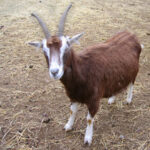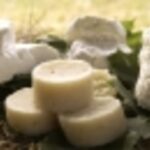Cheese is essentially made by separating the curds from the whey. Curds refer to the solid matter of milk and whey to the liquid. However, the nature of the cheese largely depends on the amount of fat in the milk, whether or not the milk is pasteurised, and for how long the cheese is given to mature, and this can be anything from a matter of hours, days, weeks or years.
Cow’s, sheep’s and goat’s milk are the main sources of cheese, although there are a number of variables that influence the final outcome. In general, cheese made from goat’s milk is pungent, from a sheep it is tangy, and coming from a cow it is sweet. Sheep and goat’s milk cheeses are the most nutritious as they contain additional vitamins, are higher in protein and a rich source of iron.
Cheese is widely eaten in the Middle East; one of the most popular is Ackawi. Native to Lebanon and Syria, Ackawi is a firm and smooth cheese made from cow’s milk. It is white in colour and primarily used as a table cheese and very often served at the mid day and evening meal. When boiled, Ackawi becomes known as Neboulsi cheese, and this is often mixed with a variety of spices. Unfortunately, Ackawi is difficult to obtain outside of the Middle East
Feta cheese is popular in the West, as well as in Southern Europe and the Middle East. It is made from sheep’s or goat’s milk and then preserved in brine or oil, Feta is somewhat salty to the palate, and depending on individual taste this can be rectified by soaking the cheese in water or milk for fifteen to twenty minutes prior to eating. Feta is used in a wide variety of dishes and is especially complementary when soaked with Olive oil, sprinkled with black pepper and served with chunks of watermelon.
Originally from Cyprus, the cheese known as Halloumi is popular throughout the Middle East and Southern Europe. It is made from either sheep’s or cow’s milk and is similar in texture to Italian Mozzarella, although Halloumi is more salty. This can be overcome in the same way used to reduce the saltiness of feta. Halloumi can be fried or grilled and like feta, it is often eaten with watermelon.
The cheese Jibneh Arabieh is commonly referred to as Jibni. This is a Syrian cheese originally made from sheep’s or goats milk; today it is made mostly from cow’s milk. Jibni is similar to Halloumi but sweeter in taste. It can be fried or eaten alone. Jibni is produced by Arab farmers and not often sold in the shops, it is almost impossible to find Jibni outside of the Middle East.
Labneh is frequently made within the home in Arabian countries. This cheese comes from strained natural yogurt and is frequently eaten as a spread or a dip. It is a thick creamy cheese with a tangy flavour. It sometimes contains spices such as cumin and mint. Labneh can be made into small balls and is frequently served in salads.
Shanklish, also known as Surke, is a cheese common to Syria and the Lebanon. It is made from sheep’s or cow’s milk. Various herbs and spices such as thyme, aniseed and chilli are sometimes mixed in with Shanklish. It is formed into small balls and can either be fresh or aged. Fresh Shanklish is mild in flavour with a soft texture, and it becomes strong-tasting and chalky with age.
There are many other cheeses within the Middle East such as the Egyptian cheese known as Testouri. Made from sheep’s and goat’s milk it comes in a spherical shape and is sometimes eaten salted. Unfortunately, Testouri, like many other Middle Eastern cheeses are difficult to find in the West. It’s highly unlikely that they can be found in the shops. However, there is a possibility that these delightful cheeses can be purchased from reputable internet sites.






